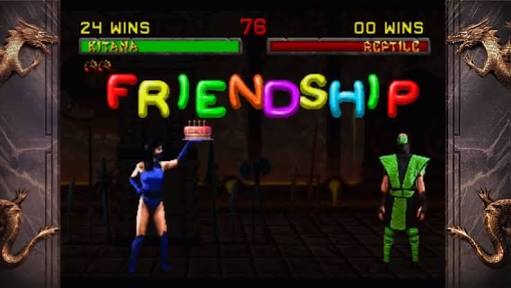In the wake of yet another mass shooting the usual arguments are trotted out and as the hyperbole reaches a fever pitch some Americans have returned to blaming video games for societies woes. Which is kind of surprising given that there is no evidence linking video games to gun violence.
I’ve seen Florida’s attourney general speak before and it was an underwhelming experience. I assume to become an attourney general you’ve got to have some degree of nouse but that is genuinely just an assumption. Making rational, legal arguments is probably a requisite too. So when you get Pam Bondi and Donald Trump into a conversation about massacres in schools the output isn’t really surprising. But if you give a little bit of benefit of the doubt, in his clumsy way he’s actually making a fair point:
I’m hearing more and more people seeing the level of violence in video games is really shaping young people’s thoughts. And then you go the further step, and that’s the movies. You see these movies, and they’re so violent a kid is able to see the movie if sex isn’t involved, but killing is involved, and maybe we need to put a rating system for that. The fact is that you are having movies come out, that are so violent, the killing and everything else, and we may have to think about that. – Donald Trump
Obviously there is “a rating system for that” in movies and obviously there is “a rating system for that” in video games. But the observation he’s trying to make is spot on and it highlights a few inconvenient truths. Meanwhile Tom MacArthur, clearly without having spent much time thinking about it, proposed a tax on violent video games. His naieve and clumsy approach to this issue is probably more about garnering attention in the media rather than actually addressing a pressing social issue.
I happened to be visiting a friend who is a young mother. Her kids are like any others – they love their PlayStation. Their favourite series of games is GTA. I’d heard a car pull up and her eldest son came into the kitchen where we were talking. He looked nervous. “Mum, there’s a black guy outside.” It was one of her friends who was due to stop by.
I’m not here to provide quantative evidence that shows that this 6 year old thought that a black guy showing up in a souped up car meant trouble just because the kid spent a lot of time playing a game where the main characters are black guys in souped up cars causing trouble. My point is that I agree with Donald Trump.
The ESRB rating system was developed and adopted in the tumultuous 1990s when rock music and Dungeons and Dragons were still considered gateways to Satanism. Mortal Kombat and its motion-captured sprites looked shocking, almost the same as reality. The 1993 congressional hearings on video game violence make for fascinating reading and I’d encourage you to check out th transcripts. The ratings system, after it was developed, been applied rigorously and consistnently since then.
So when a parent buys a product for their 6 year old child that is rated for mature audiences, because of the violent content, it is simple enough to point out what is wrong with that transaction. The game is rated 15+ for a reason.
I’ve been playing violent video games for as long as I’ve been playing video games. The first specific example I can recall is playing Battle Chess where each of the pieces are animated and slay each other in relatively violent (and humorous) ways. I’ve also been a fan of Mortal Kombat since MKII. I haven’t been running around ripping people’s heads off since then. But has the way I think been influenced by witnessing casual violence at such a young age? Of course. Has the way I think been influenced by the violence in the fiction I read as a kid? What about the comics? Yes, of course. It would be an odd proposition to say that what a child consumes doesn’t not affect them.
The Immortal John Hancock, who’s YouTube channel I have recently started following, put out out a video on the topic after the latest US school massacre. In it he and his wife explain their personal approach to managing their children’s exposure to digital media. Unsurprisingly they don’t let their pre-teens play violent video games.
We shouldn’t be surprised that mass killings, wars and violence on the streets happens on a regular basis. It is celebrated in our popular culture from movies to music. And while the genesis of the American being is couched in terms like “exceptionalism” and “freedom”, it’s important to remember that often its seminal moments are punctuated with killing. Modern American cinema and television are centred around violence.
There is no question that the modern interpretation of the second amendment is misconstruing it’s purpose. The fact that pro gun advocates don’t even verbalise the entire paragraph should be a warning sign. But most people look the other way. And most parents look the other way when their child’s current mission in their video game is to facilitate a drug deal and to carry out violent retribution against a competing group of people.
Video games don’t make people shoot other people. But they do normalise violence in a world where there is already too much violence. There should be civil penalties in place, and enforced, for people that sell video games to people that don’t meet the age criteria. Games sold on Steam should only be sold to people that meet the age criteria. An age rating system on video games that isn’t enforced would be as useful as speed limits on roads that aren’t enforced. But the most important part of all of this is that parents need to realise that the experience that video games provide is as visceral and influential as other media whether it is movies, tv shows or books. Sure, this is relatively new territory for patents. But it’s important. Maybe more important than we currently recognise.

